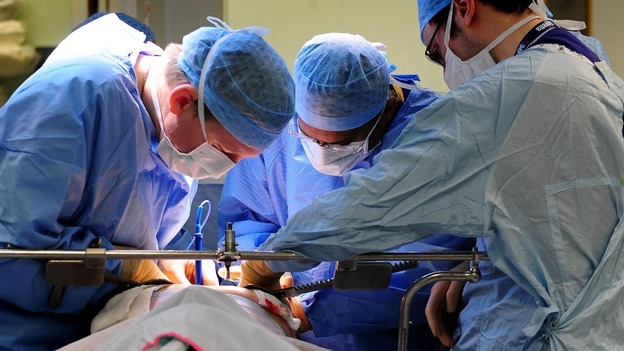Transplantation is a procedure by which organs or cells are removed from one body and placed into another, to replace damaged or missing equivalents. The procedure is often life-saving. However, transplants have high complication rates, short- as well as long-term rejections occur frequently, and many patients in need of a transplant do not find an appropriate donor.
Transplant rejection occurs when transplanted tissue is rejected by the recipient’s immune system, which destroys the transplanted tissue. While it can be lessened to some extent by determining the molecular similitude between donor and recipient and by use of immunosuppressant drugs after transplant, tremendous commercial potential exists for a therapeutic agent that can enable transplantation, enhance acceptance, improve viability, and/ or improve patient outcomes.
Even when matched donors are used in transplant procedures, many patients develop graft-versus-host disease (GvHD), which can be fatal or progress to a chronic, lifelong condition. GvHD is a multisystem disorder that occurs after an allogeneic hematopoietic cell transplant (HCT), when immune cells from the donor (the graft) recognize the transplant recipient (the host) as foreign and initiate an immune reaction that causes disease in the transplant recipient.
Allogeneic hematopoietic cell transplantation is a common treatment for many different cancers (especially relapse of leukemia or lymphoma) as well as certain non-cancer conditions that affect the blood or immune system. In addition to HCT procedures, GvHD can also occur after transplantation of solid organs that may contain immune cells such as T cells.
Immunosuppressant drugs are the current standard treatment of GvHD. However, these are designed to shut down all immune reactions and as a result increase the risk of infection and relapse, which are major causes of death following HSCT. GvHD patients face a tough choice between (1) to use immunosuppressants that reduce GvHD but increase risk of infection and relapse of the disease that caused the need for transplant, OR (2) to choose no treatment and avoid relapse but suffer from the consequences of GvHD.
Our research suggests sPIF has the potential to regulate several pro-inflammatory genes and proteins, block activated T-cell proliferation, and reduce oxidative stress, avoiding transplant rejection. Preclinical effect has been observed promoting and sustaining engraftment of donor bone marrow cells, thereby preventing development of GvHD (including protection against its typical hallmarks: dermatitis, hepatitis and colon ulceration), and as a result significantly reducing overall mortality in bone marrow transplant setting.
We have been granted FDA Orphan Drug Designation in GvHD prevention. The NIH is supporting our development through its NCATS BriDGs program.
